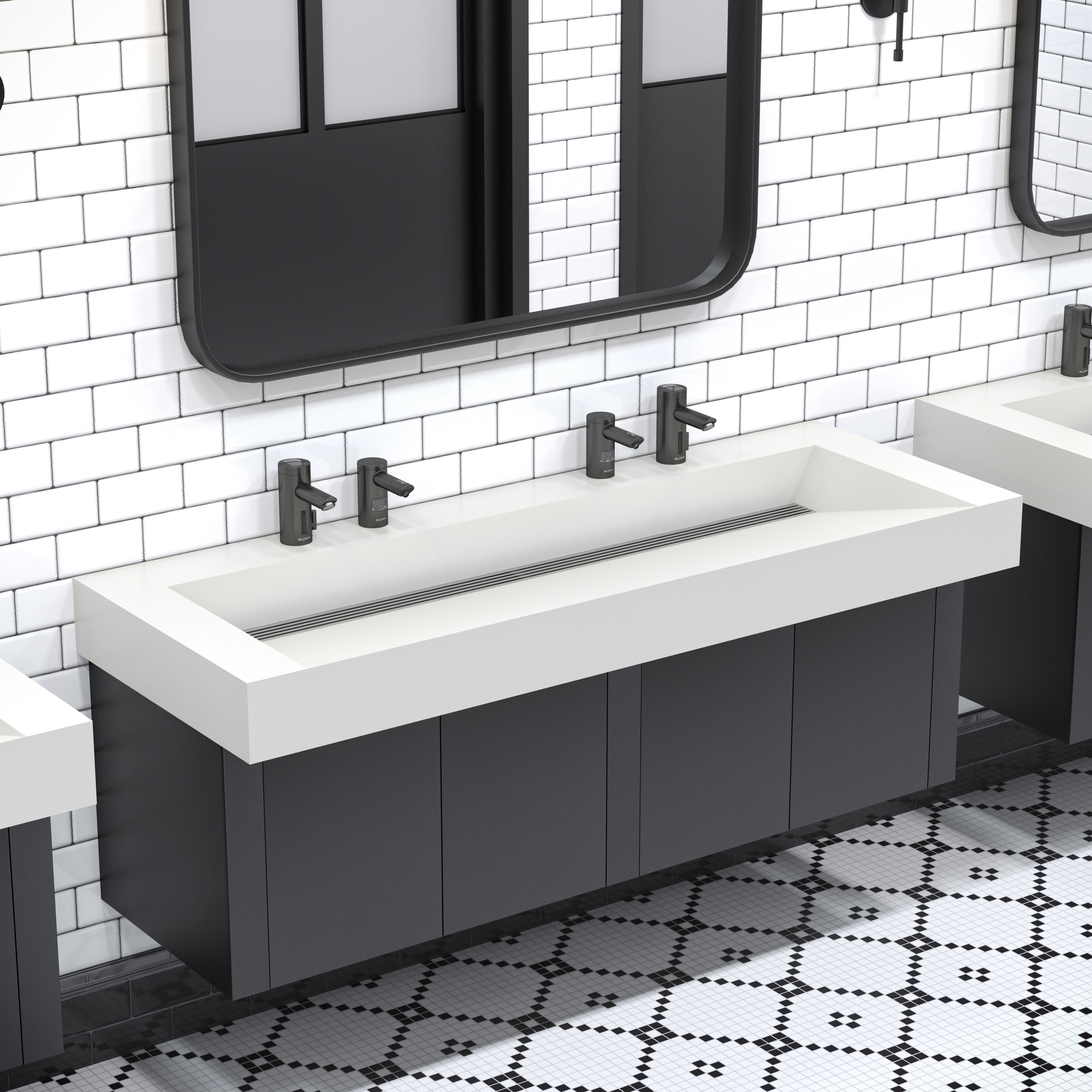Commercial facilities of all types continue to retrofit their restrooms to touch-free operation at a rapid pace to put returning customers at ease and to enhance overall health and wellness. Having debuted the first hands-free sensor faucet in 1974, while having also installed more flushometers in public restrooms than any other brand, Sloan is uniquely positioned to assist with this retrofit revolution in a simple and cost-effective manner. Sloan Technical Training Manager Andrew Warnes provides his insights on the trend of touch-free retrofits.
How has the COVID-19 pandemic accelerated the need for restroom retrofits?
The heightened sensitivity to potential contamination is the main reason why sales of sensor faucets are expected to grow 28% by 2024, and sales of all motion-sensing technology is set to grow 37% by 2023. Science supports the move to touch-free operation and its well known that the fewer surfaces guests touch, the less likely they are to spread contamination. Proper hand hygiene remains the single most important activity individuals can undertake to prevent the spread of infectious disease. As a result, “high-touch” restroom surfaces like flush handles, manual faucets, door handles, and manual soap or paper towel dispensers an are becoming increasingly phased out in favor of sensor-operated technology. Health officials and facilities have also realized that customers will wash their hands more often when they feel safe doing so. Having touch-free facilities increases the likelihood of customers engaging in proper hand hygiene and can improve overall public health outcomes.
Have there been any COVID outbreaks directly linked to the use of manual restroom products?
We’ve recently become aware of one of the first documented “super-spreader” events attributed to the use of manual fixtures in a public restroom. In that instance, a number of employees working on the Toei Oedo subway line contracted COVID-19 because they shared a single manual faucet in the employee break room. The Toei Oedo subway line is operated by the Tokyo Metropolitan Bureau of Transportation and prior to the pandemic had almost a million riders daily. In December 2020 it was reported that 39 subway drivers on the line were infected after one person who was ill likely contaminated a manual faucet handle with their saliva while brushing their teeth in the break area. The subsequent illness and number of sick drivers led to a 30% loss in productivity across the 38-station subway line almost immediately. To rectify the situation, the Tokyo Metropolitan Bureau of Transportation publicly committed to convert all the restrooms in 38 stations along the line from manual to touch-free sensor operation.
How is sensor-operated technology impacting more than just proper hygiene?
Touch-free technology can accomplish more than just effective handwashing. With the Internet of Things (IoT) having made its way into restroom products, faucets are able to store information which enables maintenance teams to remotely diagnose issues. It’s even possible to monitor the percentage of CDC (Centers for Disease Control and Prevention) compliant handwashes taking place within a particular location. “Smart” restroom fittings and fixtures are now making it possible to measure water usage for each faucet or flushometer within their commercial restrooms. Facility teams can see which devices are being used and how often. This has incredible implications for scheduling maintenance. It’s one of the key advances expected to help facilities evolve from preventative maintenance to the new world of “predictive maintenance.”
Are there different considerations for touch-free retrofits based on the building environment?
Sensor-operated restroom technology can be important to customers in any commercial restroom, but the specifications required may vary depending on the facility type. For example, gooseneck faucet spouts are a preferred solution in healthcare and heavy industrial environments, as they allow for handwashing up to and above the elbows for medical professionals as well as workers who deal with dirt and grease on a regular basis.
In high-traffic venues like public transit facilities where the goal is to funnel guests out of the restroom as quickly as possible, touch-free integrated sink systems that place every step of the handwashing process within arm’s reach are a preferred solution. With a sensor-operated faucet, soap dispenser, and hand dryer, these integrated sink systems help make the handwashing process more efficient while guarding against water drips on the floor, which can contribute to slip-and-fall incidents.
In the case of educational settings, schools are often prone to student vandalism. Students may abuse equipment or flood the restroom by intentionally leaving water running. Touch-free faucets, along with sensor-operated water closet and urinal flushometers, not only promote hygiene in schools, but prevent this problem of water waste, vandalism, and flooding.
How is Sloan helping to make touch-free upgrades easy and efficient?
There are more Sloan manual flushometers installed in public restrooms than any other brand – and this makes the upgrade to touch-free operation very simple and very cost effective. Sloan has supplied “retrofit kits” for many years that eliminate much of the uncertainty, hassle, and cost from manual upgrades. From top-mount and side-mount retrofits that can be installed in just a matter of minutes, these are the best available option for a facility that hopes to open quickly with touch-free products.
This is the 24th edition in a series of Q&A segments with Sloan subject matter experts for their take on where the commercial restroom has been, what it’s evolved to now, and where it’s headed. A previous podcast edition on commercial restroom design trends can be found here.
Stay Up to Date
Sign up for the Sloan blog to receive information on the latest trends in commercial building, technology advancements and product updates. It's the leading source of industry news for architects, designers, engineers and contractors.
